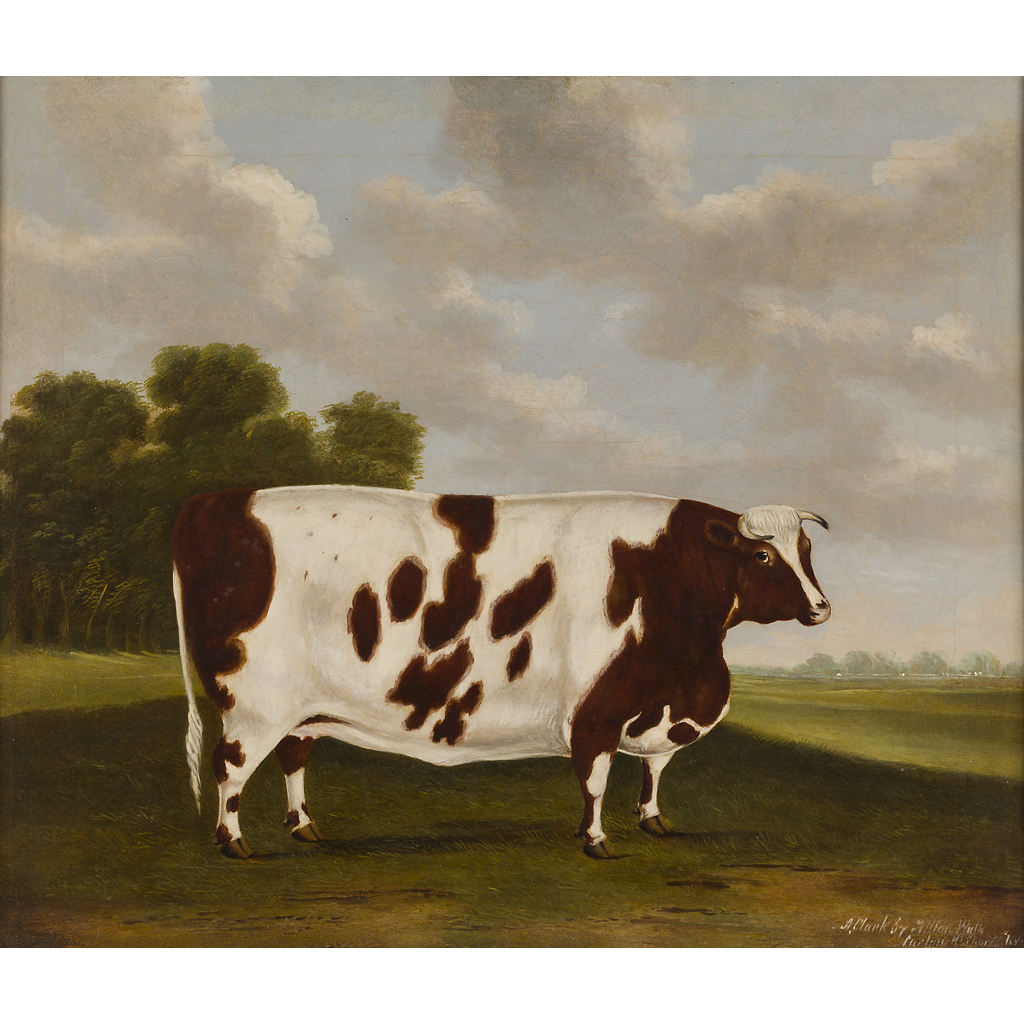FOLLOWER OF THOMAS WEAVER (BRITISH 1774-1843)
PIGEON, THE PRIZE COW OF MR PRICE, 1816
£5,250
British and European Paintings
Auction: 24 November 2016 at 11:00 GMT
Description
Indistinctly inscribed, inscribed with title verso, oil on canvas
Dimensions
51.5cm x 61cm (20.25in x 24in)
Footnote
Note: 19th century agricultural conversation pieces, like the four offered here for sale, highlight a highly idiosyncratic but sought after area of the collector's market. Their immense naïve charm accounts for much of their popularity, as do the fascinating circumstances behind their original development.
In the 18th century Britain's population exploded, almost doubling in size thanks to the boom in industrialisation. A solution was needed for the food shortages that resulted; the response being what we now refer to as the Agricultural Revolution. It was at this stage that farmers began developing methods of selective breeding, the aim being to produce larger, fatter animals that would feed more people.
Both out of pride and in order to advertise the advancements made to their herds, farmers began commissioning portraiture of their favourite animals. Livestock portraiture became a lucrative sub-genre in its own right, with artists making a career solely from this type of commission.
Though there was likely to be an element of exaggeration in these portraits, these animals were bred to have extremely enhanced features and are quite unrecognisable to the cattle we know today. Breeding these animals to freakish extents like the colossal Durham Ox (which stood at 5ft 6inches at the shoulder) was banned in the 1850s, though not before the famous bull had been trundled all over the country to be shown at local shows. Indeed, etchings after his portrait by the artist John Boultbee sold in their hundreds to the fascinated general public.
Many of the figures involved in this booming art industry had no formal training, and the majority of works consequently have a naivety and colloquialism that still charms viewers to this day. John Boultbee, however, had been trained at the Royal Academy School by Sir Joshua Reynolds, and found an admirer and collector in George III. He is best known for his depiction of Leicestershire farmer Robert Bakewell's famous herd of longhorn cattle.

